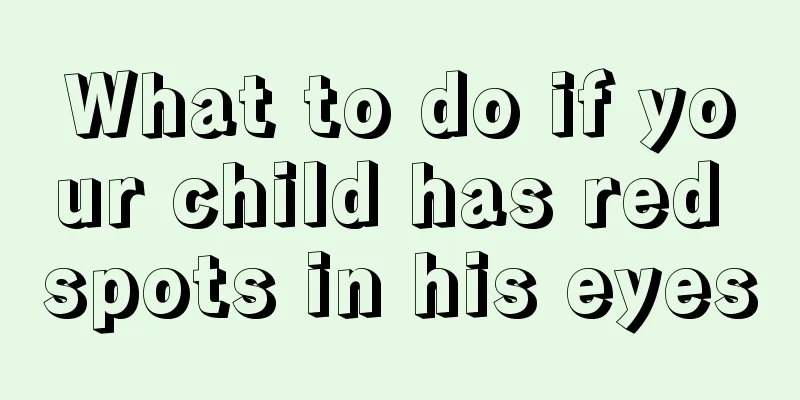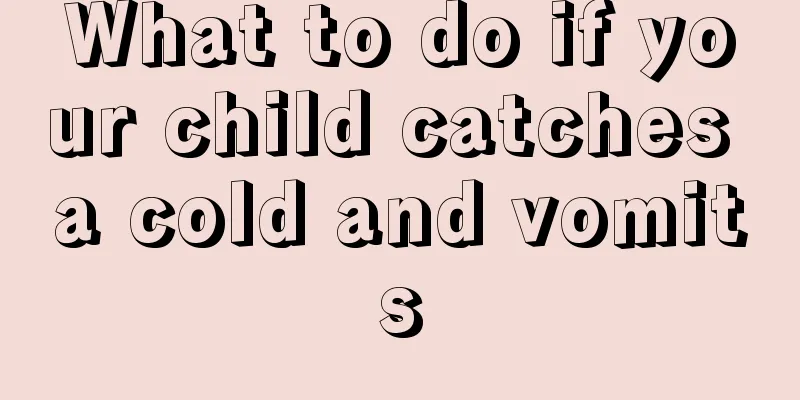What to do if your one-year-old baby has urticaria

|
Urticaria is a disease that affects a wide range of people. It affects not only adults but also babies. And it is usually due to congenital inheritance. The treatment method for urticaria in babies is slightly different from that for adults because their body mechanisms are different from those of adults. So, what should you do if a one-year-old baby has urticaria? Pediatric urticaria, commonly known as wheals, is a common allergic skin disease characterized by dilation of small blood vessels in the skin and mucous membranes and increased permeability. It is mainly manifested by erythema and localized edema reactions of varying sizes on the skin, often accompanied by itching. The basic lesion is the temporary dilation of capillaries in the skin and mucous membranes and a sudden increase in permeability. Most of the diseases are caused by allergic reactions, and the acute cases usually have a good prognosis. There are many causes of urticaria. Bacteria, viruses, parasites can all become allergens. Pollen, dust, chemicals, and even some foods can become allergens. Chronic urticaria refers to wheals that occur at least twice a week and last ≥ 6 weeks. A small number of patients with chronic urticaria may also experience intermittent attacks. Cause: The cause is complex and difficult to identify. Only 10% to 25% of children have a clear cause. Caused by certain internal and external factors. 1. Exogenous factors: mostly temporary, including foods that are prone to allergies (such as eggs, dairy products, shrimps and crabs, shellfish, spices, dyes, etc.), plants or fruits (such as bayberry, lemon, mango, plum, apricot, strawberry, walnut, cocoa, garlic, tomato, etc., rotten food and food additives), drugs (such as sulfonamide compounds, antibiotics, serum, vaccines, toxoids, morphine, codeine, aspirin, etc.), inhaled allergens (such as pollen, fungi, spores, animal feathers, dandruff, aerosols, etc.) or infections (bacteria are mostly Staphylococcus and β-hemolytic Streptococcus group A, Helicobacter pylori, viruses, fungi, intestinal parasites, etc.). Physical factors such as temperature, cold, heat, sunlight, friction pressure, implants (artificial joints, staplers, heart valves, orthopedic plates, nails, etc.) and exercise, etc. 2. Endogenous factors: Most of them are persistent, including mast cell hypersensitivity to IgE, chronic latent infection (bacterial, fungal, viral, parasitic and other infections, fatigue and mental stress can also induce. Some urticaria is accompanied by some systemic diseases, such as autoimmune diseases, rheumatic fever, systemic lupus erythematosus, rheumatoid arthritis, thyroid disease, lymphoma, leukemia, malignant lymphoma and some liver diseases, inflammatory bowel disease, etc. In acute urticaria, food may be the common major allergen, while in chronic urticaria, dust mites and house dust have the highest positivity rates. Acute urticaria in infants and young children is mainly caused by upper respiratory tract and digestive tract viral infections (such as adenovirus, Epstein-Barr virus or enterovirus, etc.), drugs (antibiotics, antipyretics, etc.) and food. |
<<: What to do if the baby's face is broken
>>: Is urticaria in children serious?
Recommend
What to do if baby has spring diarrhea
Some babies suffer from diarrhea in the spring, w...
What should I do if my child has many red spots on his palms?
Children love to play and be naughty, and they ca...
Family rehabilitation training methods for cerebral palsy
Cerebral palsy is a very common disease nowadays....
What should a three-month-old baby with anemia eat?
As soon as the baby is anemic, parents will be ve...
What should I do if my son has phlegm in his throat?
Children nowadays are the treasures of the family...
What is the best way to treat lung heat in children?
If a child develops lung heat, parents must pay a...
Best height increase pills
Some people are very dissatisfied with their heig...
What are the dangers of snoring and breath holding in children?
Clinically, snoring in children is generally caus...
What causes baby's eye bags to swell?
The first thing to consider when your baby’s swol...
9 month old baby has viral fever
The change of seasons and the sudden drop in temp...
What to do if there are particles of milk in the newborn's stool
Many newborns have granules of milk curds in thei...
What is the cause of congenital choledochal cyst?
The birth of a child brings joy to a family, but ...
Newborn baby snoring while sleeping
We know that many adults like to snore. Snoring m...
What should I do if my newborn keeps farting?
It is a very common phenomenon for babies to fart...
What causes bedwetting in teenagers
When it comes to children wetting the bed, many p...









